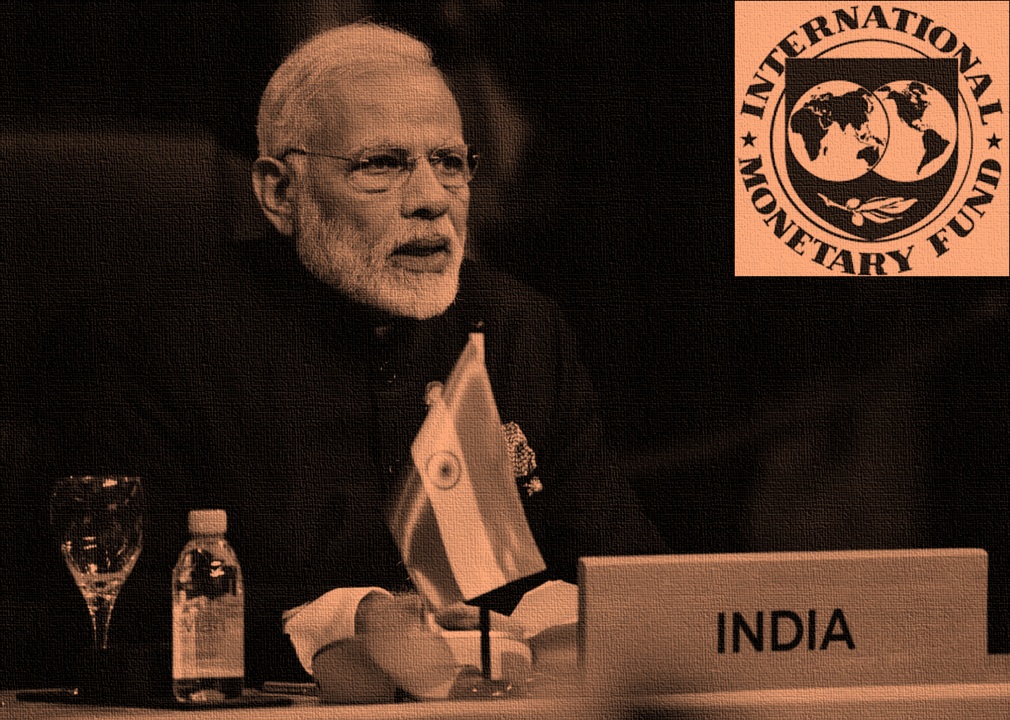International Monetary Fund (IMF) in its Regional Economic Outlook Report has declared India as the fastest growing major economy in the Asia-Pacific region. It pegged India’s GDP growth at 7.4% this financial year and 7.8% for the upcoming one. According to the IMF, “India’s recovery is expected to be underpinned by a rebound from transitory shocks – like the currency exchange initiative and the rollout of the Goods and Services Tax – as well as robust private consumption. Medium-term growth prospects remain positive, benefiting from key structural reforms”.
IMF cited the PM Modi led government’s economic reforms like GST as the primary reason behind India’s improved economic outlook. GST is a comprehensive indirect tax reform which is expected to improve growth prospects by at least 2% per annum. GST is helping India to broaden its tax base, which means that there will be more money flowing into government coffers. According to Economic Survey, GST led to 50% increase in indirect taxpayer base. These extra funds could be used by the government to provide public utilities like health and education to millions of poor Indians.
The other reason for this substantial increase in GDP growth is India’s improved Ease of Doing Business rank, thanks to the Insolvency and Bankruptcy Code (IBC). Robust consumer expenditure on goods and services like food, housing, transport as well as luxury goods has led to the stimulation of the Indian economy. India’s inflation rate, which is presently 3.6% (due to low food inflation), is also well within the bandwidth (4-6%) set by the RBI. Therefore, there is no pressure on the RBI for monetary changes in the coming term, and the RBI is expected keep Repo rate (the rate at which RBI lends to banks) at 6% in the upcoming policy review in June. IMF also suggested that “In India, given the increased inflation pressure, monetary policy should maintain a tightening bias”.
On the other hand, the Chinese economy is expected to slow down to 6.4% for this fiscal year. Chinese economic slowdown is primarily due to fiscal tightening that started at the outset of President Xi Jinping’s second term. The Chinese government is implementing comprehensive economic reforms to make China a service sector dominated economy. Currently, China is an export-led manufacturing-intensive economy, which is not a sustainable model for the long term.
Since coming to power, PM Modi has taken one bold decision after another to improve the socio-economic condition of the country. Tough decisions like Demonetization, Jan Dhan and the GST have been well received among the public as well as economic analysts. Other small reforms like privatization of loss-making government units like Air India were applauded by the corporate world and international economic organizations.
The IMF in its Regional Economic Outlook Report credited the Asia-Pacific region as the driving force for overall global economic growth. “Asia is expected to grow at 5.6 percent this year and next, up 0.1% from the previous outlook. The region continues to be the main engine of the world’s economy, accounting for more than 60 percent of global growth-three-quarters of which comes from China and India alone. Growth in ASEAN is projected to stay at 5.3 percent both this year and next, reflecting strong investment and consumption across several countries”, the report stated. The report also stated that Asian countries will benefited from the procyclical tax stimulus given by the Trump Administration to American businesses.
The IMF report ended with a cautionary note to Asian governments while discussing the role of India and China as the growth engines of the global economy. It stated that “to reap the full benefits of the digital revolution, the report notes that Asia will need a comprehensive and integrated policy strategy covering information and communications technology, infrastructure, trade, labour markets, and education”.
